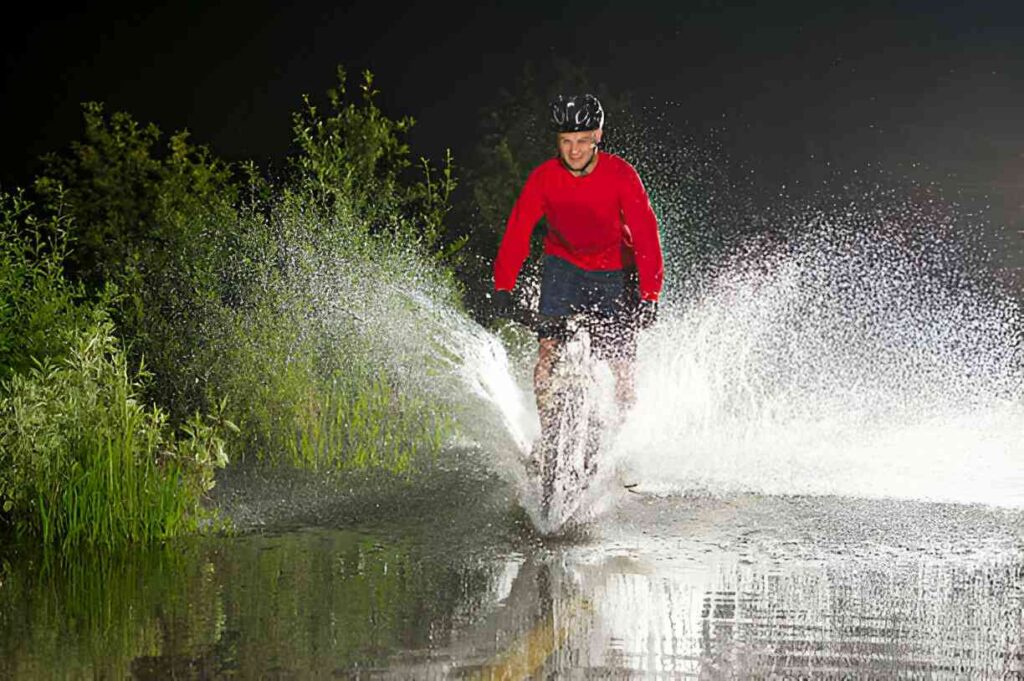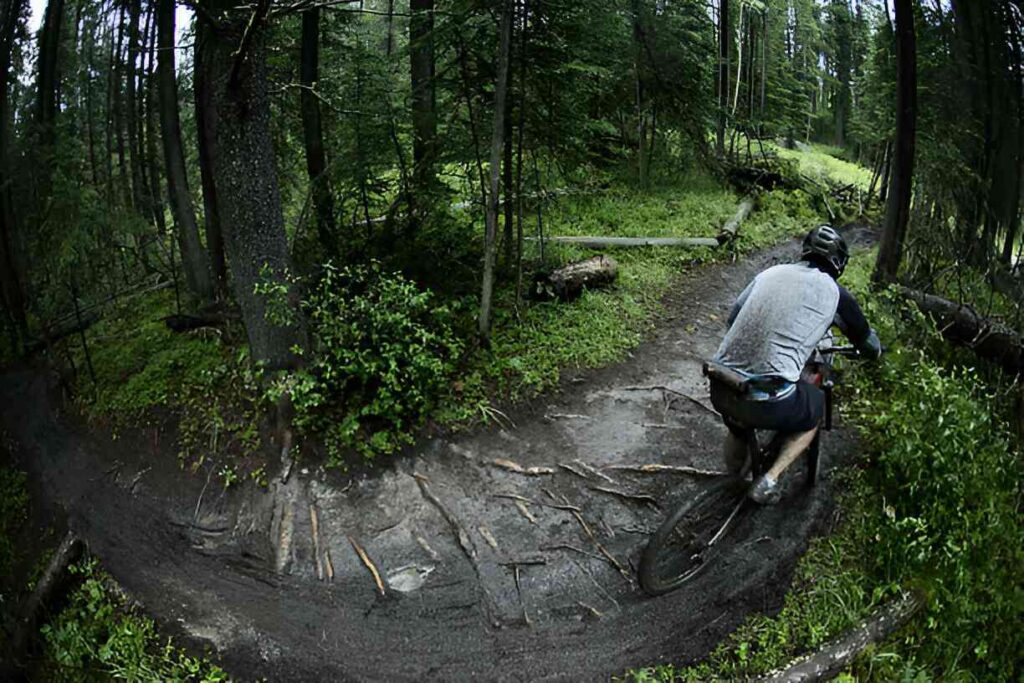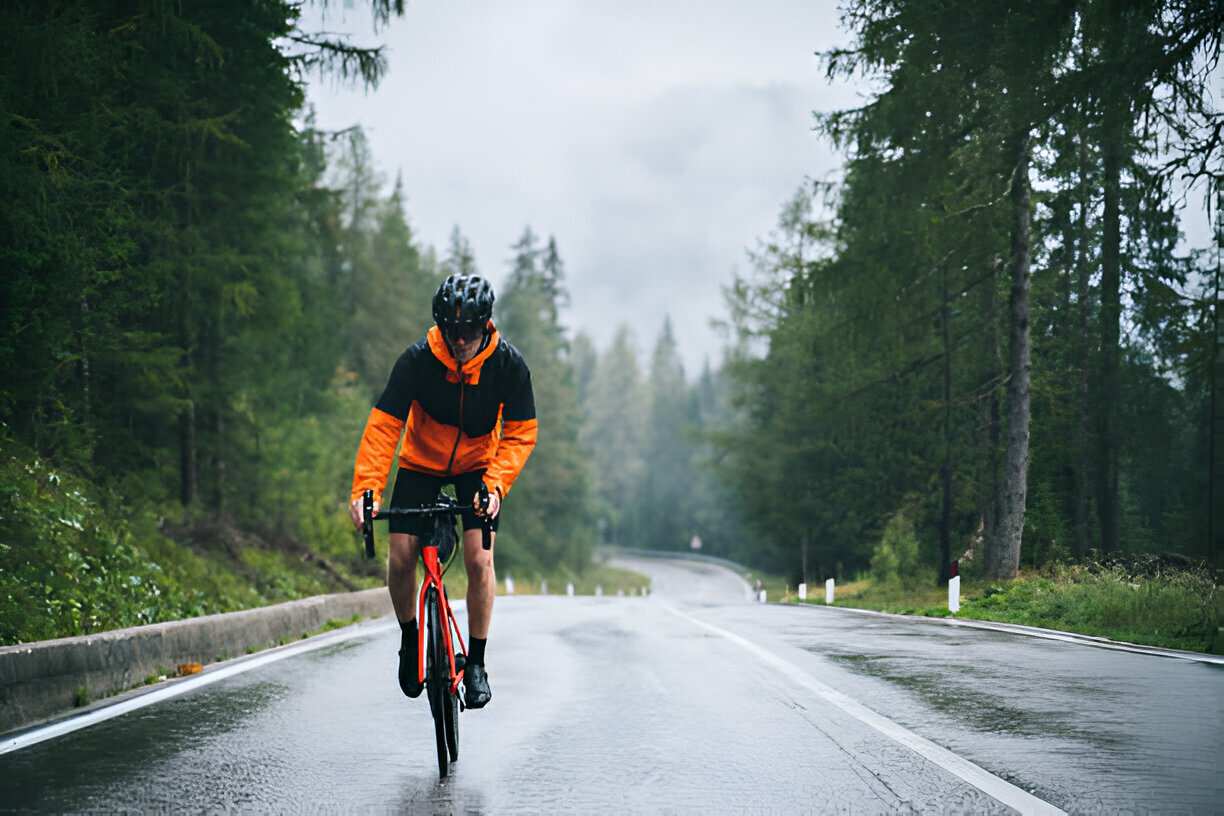Introduction
If you love mountain biking but hate rain, do you find yourself crippled with confusion about how to tackle trails when they’re wet and muddy? If so, then you’re in the right place! Welcome to my guide on “How to Mountain Bike in Wet Weather.” Since I have been mountain biking for a number of years, I know very well that riding in the rain is both very tough and very rewarding. That is why I am happy to share these crucial tips with you.
Mountain biking in the rain is another way to experience the adrenaline rush that comes with the activity and to get outdoors into nature from a totally different perspective. It also puts one in increased danger, like really slippery trails and visibility that is lower than usual. This guide will address your concerns with actionable steps so you can make your wet-weather rides safer and more enjoyable.
Here’s an article I fitted because I know the rain shouldn’t stop your biking fun. Be it safe riding on wet trails. Riders of proper preparation and techniques can hit well. Show yourself conquering a muddy trail, sometimes feeling the rain in your face, knowing you can do it.
Now, let’s dive into those tips and make your next rainy ride as fun as it is safe. Let’s ride in the rain together and enjoy our MTB rides to the fullest!
What You Will Need to Follow This Tutorial-Mountain Bike in Wet Weather
- Waterproof Helmet Cover: Keeps your head dry and increases visibility.
- Alternatives:
- Standard Helmet Cover: Gives your head a bit of protection from rain.
- Advanced Helmet Cover: I recommend this due to its fit and water-sealing properties. It is better for both protection and comfort.
- Alternatives:
- Waterproof Jacket and Pants: Is required to stay dry and warm.
- Alternatives:
- Basic Waterproof Gear: Cheaper, not so durable.
- High-Quality Waterproof Gear: Tougher and more breathable. I would recommend good gear for your comfort and durability, mainly if you are going to be out a bit longer.
- Alternatives:
- Mudguards: Prevent mud and water from splattering on you.
- Alternative
- Clip-On Mudguards: Easy on and off.
- Full-Length Mudguards: Maximum protection. I would choose full-length mudguards for better safety.
- Alternative
- Waterproof Gloves: Dry hands; maintained grip.
- Alternative
- Basic Waterproof Gloves: Inexpensive but not so warm.
- Insulated and Waterproof Gloves: These are for wearing in colder conditions. Thereafter, it is advisable that you put on insulated gloves to further protect your hands from harsh conditions.
- Alternative

Step-by-Step Instructions
Step 1: Preparing Your Bike for Wet Conditions Picture:
Fit your bike with mudguards to keep the mud off you. Check your tires, and if needed, fit ones with better grip on wet conditions. Use a wet lube on your chain to be sure no rust will build up and to ensure it will shift smoothly. Test your brakes and make sure they work in a way that will be effective to stop you; transitioning into wet conditions means that your brakes might not stop you the way they would in dry conditions. Well-prepared bikes help perform better in the rain and help reduce maintenance.
Step 2: Dress Appropriately for Wet Weather
It is very important to feel comfortable and safe when riding, and surely that comes with the right kind of clothing. Start from the point that your attire should be both top and bottom waterproof, with an appropriate jacket and pants. Clothing should be layered so that your body temperature is very well tuned, because one can easily overheat through this very good effort of one when you pedal it hard. Waterproof gloves are very necessary to keep the fingers warm and to be firm on the handlebars. A waterproof helmet cover will keep the head dry and also help enhance visibility. Dressing comfortably lets you stay on the trail with focus.
Step 3: Modify Your Riding Technique Photo:
Wet weather riding involves some adjustments to technique. Slow down, and allow yourself a little more reaction time to obstacles. Brake earlier and more lightly so you don’t skid. Keep lower body positioning to stay more stable and controlled. Look way ahead and chart your line so you don’t slip across those roots and rocks. Of course, all these adjustments in technique lead to a better level of control and less chance of crashing.
Step 4: Be Trail Safe Pictured:
With rain and mountain biking, remember to put your safety first. Always let someone know about your intended movement and expected return time. Carry with you a fully charged phone and at least a basic repair kit: spare tube and multi-tool. Also be aware of trail conditions and avoid riding in very heavy rain or during storms. Wet trails are very unpredictable, so be cautious and ride within your limits. By ensuring your safety, you will be able to enjoy your ride without much more risk.
Step 5: Wash and service your bicycle after the ride.
Thoroughly clean your bike after the ride by washing away all the collected mud and dirt, with more attention paid to the drivetrain and the brakes. Dry the bike and spray the chain with some lube to prevent it from rusting. Look out for any damage or wear and take on the needful repairs. Regular maintenance will ensure that your bike is in perfect condition and is always ready for all your important adventures. Proper cleaning and maintenance give your bike a longer life and sufficient performance during your next rides.

Conclusion
I really hope that you indeed enjoyed the tutorial related to mountain biking during wet weather and found it educative and informative. The rain ride is challenging to many, but it is amazing how it is rewarding for one to be equipped with the right techniques. This is very important for me because I would like people to enjoy the best of mountain biking in a safe manner, irrespective of the weather.
I would love to hear from you regarding this tutorial. Have you found the steps easy to follow? Would you like to share some tips or experience you have gained? Please write your thoughts in the section below, and do let me know what you think. Also, if you liked this article and found it useful, please share it with your friends and give advice to other bikers. Your support is very much appreciated!
Remember, mountain biking in the rain can be an exhilarating experience when you are well prepared. Get out there, embrace the challenge, ride safely, and enjoy the ride! Thanks for reading, and happy biking!








